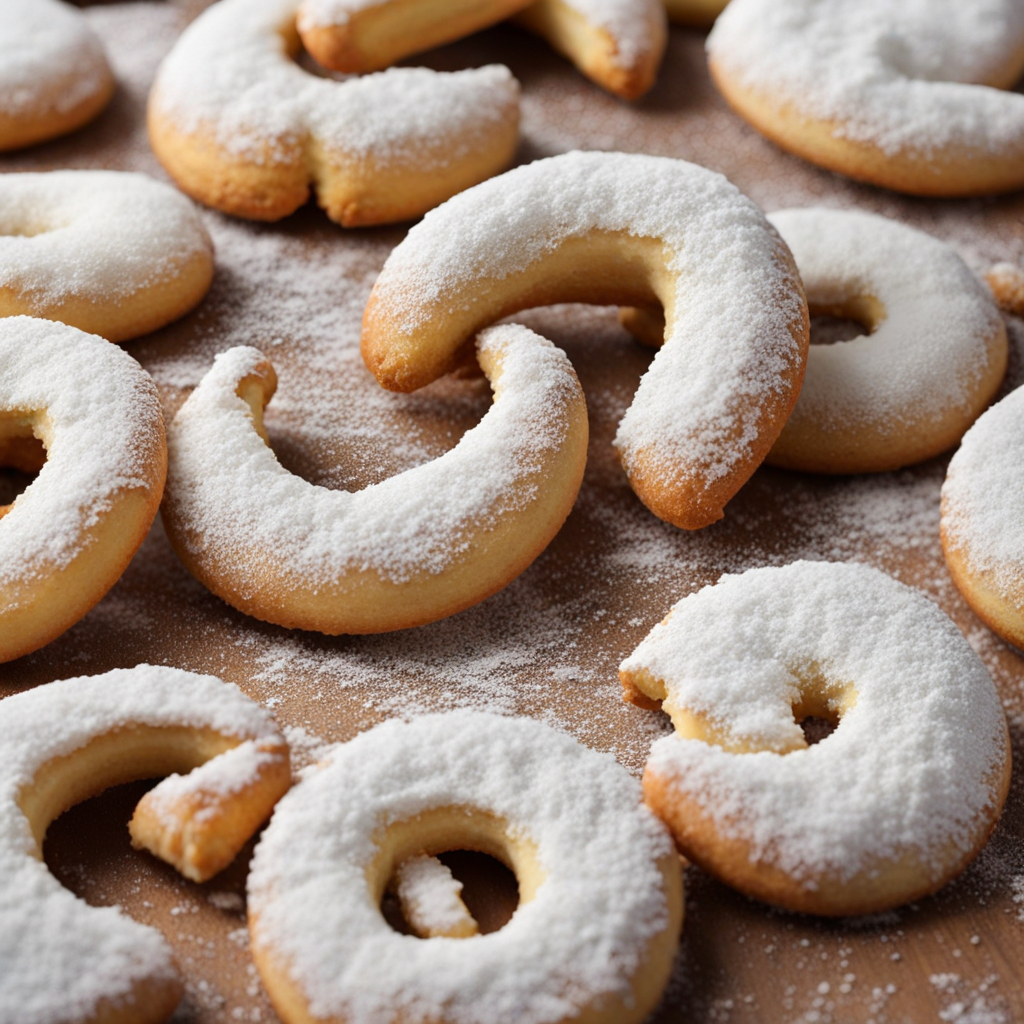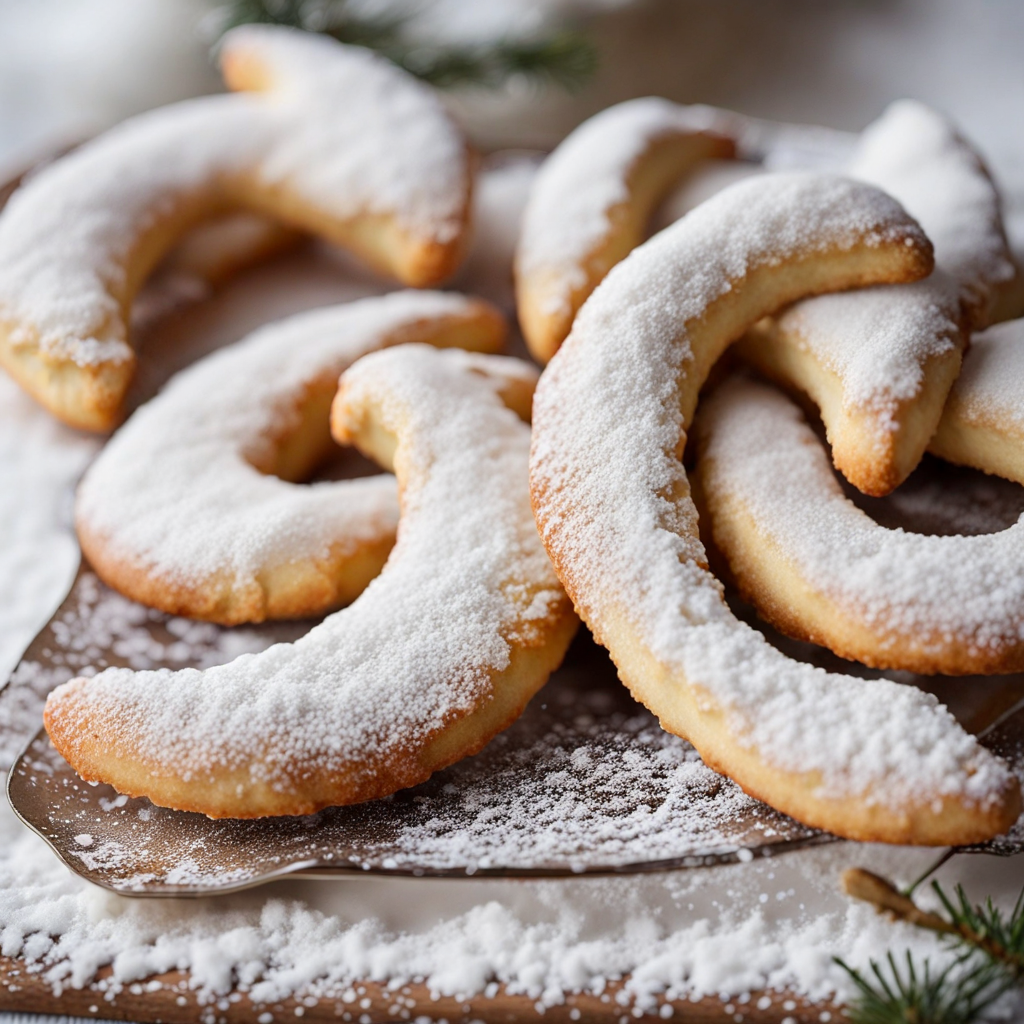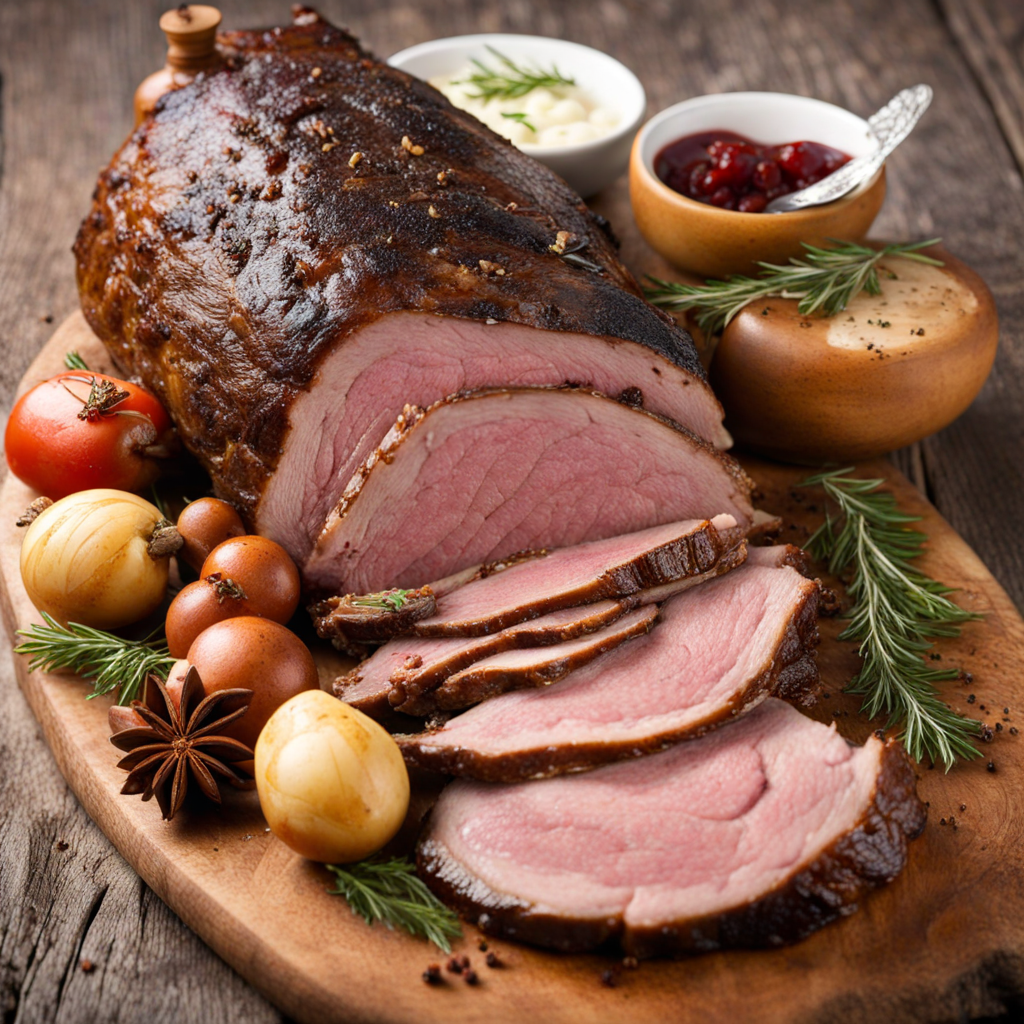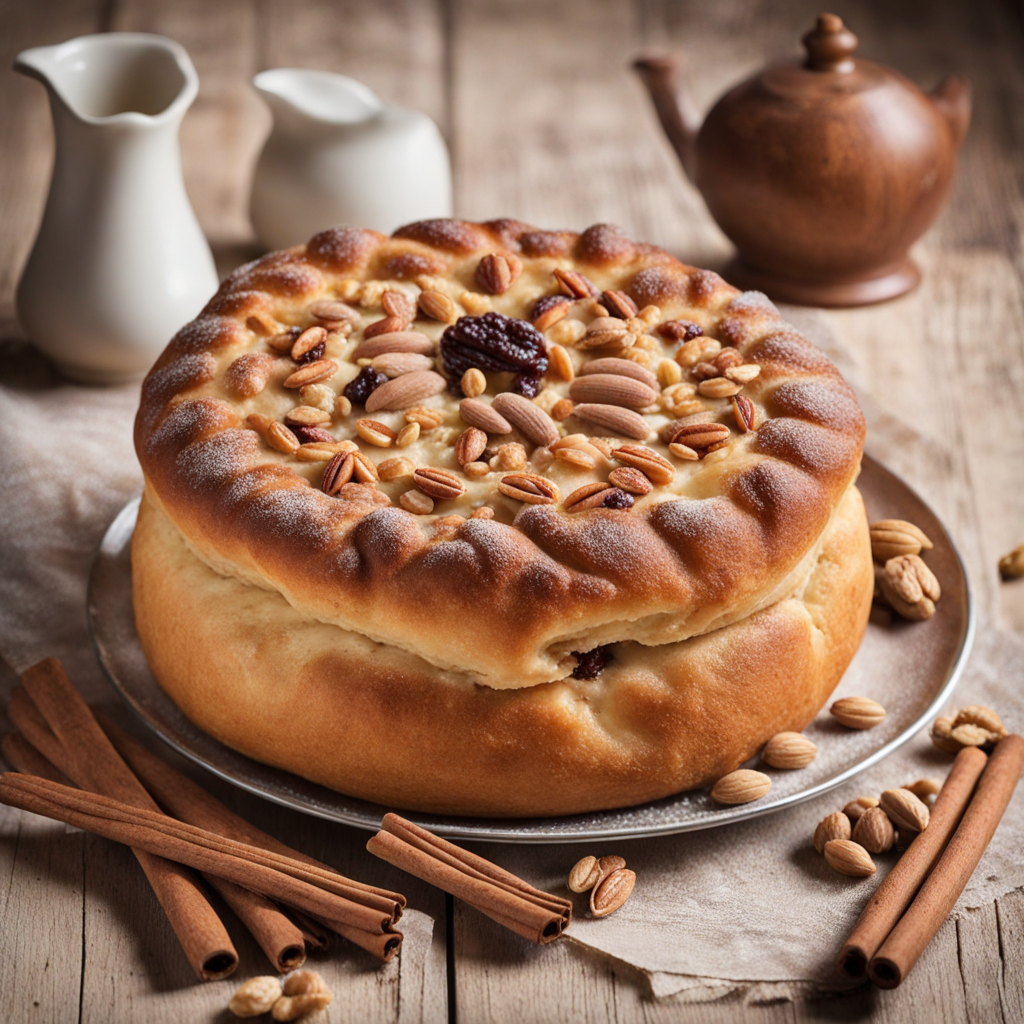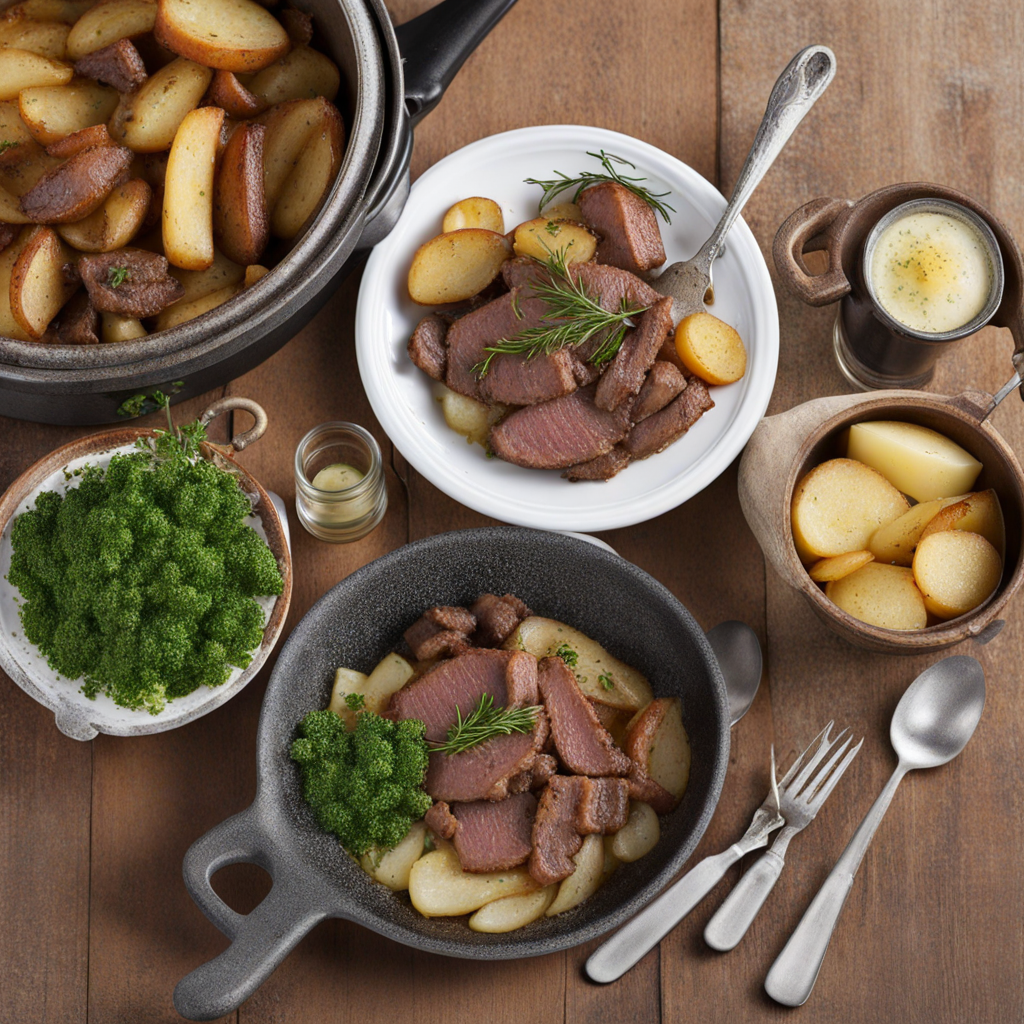Vanillekipferl
Vanillekipferl are delightful crescent-shaped cookies that originate from Austria, embodying the essence of traditional Austrian baking. These delicate treats are typically made with a blend of flour, ground almonds or walnuts, butter, sugar, and a touch of vanilla, which gives them their signature flavor. The dough is rolled into small logs, shaped into crescent forms, and baked to a pale golden hue, creating a light and crumbly texture that melts in your mouth. The use of nuts adds a subtle crunch, enhancing the overall experience of each bite. Once baked, the Vanillekipferl are generously dusted with a mixture of powdered sugar and vanilla sugar, which not only gives them an appealing snowy appearance but also intensifies their aromatic sweetness. The combination of the buttery, nutty cookie with the fragrant vanilla coating creates a harmonious balance of flavors that is both comforting and indulgent. These cookies are often enjoyed during the holiday season in Austria, making them a nostalgic treat for many. What makes Vanillekipferl truly special is their versatility; they can be enjoyed with a cup of coffee, tea, or hot chocolate, making them perfect for cozy gatherings or festive celebrations. The buttery richness and delicate sweetness are sure to entice anyone looking to explore new tastes, while their traditional roots connect you to the rich culinary heritage of Austria. Each bite invites you to savor the moment, making Vanillekipferl a must-try for anyone seeking a unique and delicious experience.
How It Became This Dish
Vanillekipferl, the delightful crescent-shaped cookies dusted with powdered sugar, are a beloved staple of Austrian and Central European Christmas traditions. Their name derives from the German words "Vanille," meaning vanilla, and "Kipferl," which translates to "crescent." These cookies are emblematic of the region's rich culinary heritage, illustrating how food can express cultural identity and seasonal celebration. Origins The history of Vanillekipferl can be traced back to the Austro-Hungarian Empire, where culinary traditions were influenced by various cultural exchanges. The origins of the Kipferl itself date back to at least the 13th century, with evidence suggesting that similar crescent-shaped pastries were made by the Ottomans. The crescent shape is said to symbolize the Islamic crescent moon, and after the defeat of the Ottoman Empire during the Siege of Vienna in 1683, the Viennese bakers created a pastry shaped like the crescent to celebrate their victory. However, the specific use of vanilla and the distinct preparation methods that characterize Vanillekipferl are believed to have emerged later, likely in the 19th century. The introduction of vanilla as a flavoring agent coincided with the increased trade and exploration of the New World, where vanilla beans were sourced from Mexico. The combination of almond or hazelnut flour, butter, sugar, and vanilla created a rich, crumbly texture that set Vanillekipferl apart from other holiday cookies. Cultural Significance Vanillekipferl is not merely a dessert; it is an integral part of Austrian culture, particularly during the Advent season leading up to Christmas. In many Austrian households, the preparation of Vanillekipferl is a cherished family tradition. The process often involves gathering family members in the kitchen, where they roll, shape, and bake the cookies together. This communal activity fosters bonding and creates lasting memories, highlighting the importance of food in family and cultural traditions. In Austria, Christmas markets, or "Christkindlmärkte," feature stalls selling an array of festive treats, and Vanillekipferl are a common sight. Their delicate appearance and sweet aroma draw in both locals and tourists alike, making them a symbol of holiday cheer. The cookies also have a broader significance within Central European countries, with variations appearing in Germany, Hungary, and Czech Republic, each adapting the recipe to local tastes while maintaining the essential characteristics of the treat. Development Over Time The evolution of Vanillekipferl over the years reflects broader changes in culinary practices and preferences. Initially, the recipe would have been quite simple, focusing primarily on basic ingredients like flour, sugar, and nuts. However, as the culinary landscape evolved, so too did the recipes. In the early 20th century, with the rise of commercial baking and the availability of more refined ingredients, the recipes for Vanillekipferl began to diversify. Some bakers started incorporating different types of nuts, such as walnuts and pecans, to create a richer flavor profile. The introduction of various spices, such as cinnamon and cardamom, also found its way into some modern adaptations, offering a new twist on the classic cookie. Additionally, the rise of health consciousness in the late 20th and early 21st centuries has led to some innovative variations of Vanillekipferl. Some bakers now experiment with gluten-free flours or reduce sugar content to cater to dietary restrictions, while others embrace vegan alternatives by substituting butter with plant-based fats. These adaptations ensure that Vanillekipferl remains relevant and accessible to contemporary audiences, while still honoring its traditional roots. Modern Interpretations and Global Reach As Austrian cuisine gained popularity beyond its borders, Vanillekipferl began to appear in international cookbooks and culinary blogs, spreading its fame far beyond the confines of Austria and Central Europe. This global interest has led to the emergence of new interpretations, where chefs and home bakers alike experiment with flavors and presentations. In some regions, Vanillekipferl has been adapted to include fillings or coatings. For instance, some versions feature a dark chocolate dip, adding a layer of decadence that contrasts beautifully with the buttery cookie. Others might incorporate fruit preserves or flavored creams, providing a contemporary twist while still maintaining the cookie’s traditional crescent shape. Moreover, with the increasing popularity of baking shows and social media platforms like Instagram and Pinterest, the visual appeal of Vanillekipferl has also contributed to its resurgence in popularity. Beautifully arranged platters of these cookies, dusted with powdered sugar and served alongside cups of steaming mulled wine or hot cocoa, have become a staple of festive gatherings, further cementing their status as a symbol of holiday celebration. Conclusion Vanillekipferl is more than just a simple cookie; it embodies centuries of cultural tradition and culinary evolution. From its origins in the kitchens of the Austro-Hungarian Empire to its modern interpretations across the globe, this crescent-shaped delight has remained a cherished part of the holiday season. Each bite brings with it a taste of history, family bonding, and the joy of celebration. As we enjoy Vanillekipferl today, whether in a traditional form or a contemporary variation, we partake in a culinary legacy that emphasizes the importance of community, culture, and the timeless joy of sharing good food. So, the next time you savor a Vanillekipferl, remember that you are indulging in a piece of history, one that continues to bring people together through the simple act of baking and sharing.
You may like
Discover local flavors from Austria


